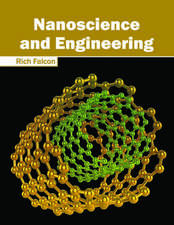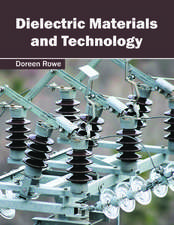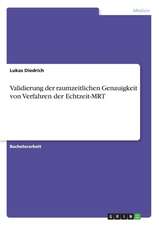Structure Preserving Energy Functions in Power Systems: Theory and Applications
Autor K.R. Padiyaren Limba Engleză Hardback – 15 mar 2013
- Describes the analytics of monitoring and predicting dynamic security and emergency control through the illustration of theory and applications of energy functions defined on structure preserving models
- Covers different facets of dynamic analysis of large bulk power systems such as system stability evaluation, dynamic security assessment, and control, among others
- Supports illustration of SPEFs using examples and case studies, including descriptions of applications in real-time monitoring, adaptive protection, and emergency control
- Presents a novel network analogy based on accurate generator models that enables an accurate, yet simplified approach to computing total energy as the aggregate of energy in individual components
| Toate formatele și edițiile | Preț | Express |
|---|---|---|
| Paperback (1) | 456.63 lei 6-8 săpt. | |
| CRC Press – 27 oct 2017 | 456.63 lei 6-8 săpt. | |
| Hardback (1) | 1105.69 lei 6-8 săpt. | |
| CRC Press – 15 mar 2013 | 1105.69 lei 6-8 săpt. |
Preț: 1105.69 lei
Preț vechi: 1484.00 lei
-25% Nou
Puncte Express: 1659
Preț estimativ în valută:
211.58€ • 226.25$ • 176.41£
211.58€ • 226.25$ • 176.41£
Carte tipărită la comandă
Livrare economică 18 aprilie-02 mai
Preluare comenzi: 021 569.72.76
Specificații
ISBN-13: 9781439879368
ISBN-10: 1439879362
Pagini: 380
Ilustrații: 148 b/w images, 30 tables and Over 500
Dimensiuni: 156 x 234 x 25 mm
Greutate: 0.87 kg
Ediția:1
Editura: CRC Press
Colecția CRC Press
ISBN-10: 1439879362
Pagini: 380
Ilustrații: 148 b/w images, 30 tables and Over 500
Dimensiuni: 156 x 234 x 25 mm
Greutate: 0.87 kg
Ediția:1
Editura: CRC Press
Colecția CRC Press
Cuprins
Detection of Instability Based on Identification of Critical Cutsets. Sensitivity Analysis for Dynamic Security and Preventive Control Using Damping Controllers. Application of FACTS Controllers for Emergency Control – I. Application of FACTS Controllers for Emergency Control – II. Appendices.
Notă biografică
Prof. K.R. Padiyar is with Indian Institute of Science, Bangalore since 1987, where he is presently an Emeritus Professor in the department of Electrical Engineering. Previously he was with Indian Institute of Technology, Kanpur from 1976 to 1987 where he became a Professor in 1980. He obtained B.E. degree from Poona University in 1962, M.E. degree form Indian Institute of Science in 1964 and PhD degree from University of Waterloo, Canada in 1972.
Prof. Padiyar is an internationally recognized expert in the areas of HVDC and FACTS, Power System Stability and Control. He has authored over 200 papers and five books including "HVDC Power Transmission Systems", "Power System Dynamics", "Analysis of Subsynchronous Resonance in Power Systems "and recently, "FACTS Controllers in Power Transmission and Distribution". He is a Fellow of Indian National Academy of Engineering and Life Senior Member of IEEE. He was awarded the Dept. of Power Prize twice by Institution of Engineers (India). He is the recipient of 1999 Prof. Rustom Choksi Award for Excellence in Research for Science/Engineering. He was ABB Chair Professor during 2001-03.
He has published several papers on the subject of power system stability, Structure Preserving Energy Functions(SPEF) and their applications. Some of these are listed below.
Prof. Padiyar is an internationally recognized expert in the areas of HVDC and FACTS, Power System Stability and Control. He has authored over 200 papers and five books including "HVDC Power Transmission Systems", "Power System Dynamics", "Analysis of Subsynchronous Resonance in Power Systems "and recently, "FACTS Controllers in Power Transmission and Distribution". He is a Fellow of Indian National Academy of Engineering and Life Senior Member of IEEE. He was awarded the Dept. of Power Prize twice by Institution of Engineers (India). He is the recipient of 1999 Prof. Rustom Choksi Award for Excellence in Research for Science/Engineering. He was ABB Chair Professor during 2001-03.
He has published several papers on the subject of power system stability, Structure Preserving Energy Functions(SPEF) and their applications. Some of these are listed below.
Recenzii
"The main strength of the book seems to be its entirety. …. One really has a feeling that there's everything one may need from this field. As the subject of energy functions is not always easy to understand, it is also important that the theoretical considerations are supported by examples and case studies. … The book represents the state of the art in the field of structure preserving energy functions for power systems."
—Rafael Mihalic, Full Professor, Faculty of Electrical Engineering, Ljubljana, Slovenia
"This book is an excellent reference for the power system community, as it provides thorough coverage of technical aspects such as power system stability, security, direct methods for transient stability, and the application of HVDC and FACTS for stability improvements."
—Dr. Ram Adapa, Technical Leader, EPRI, Palo Alto, California, USA
—Rafael Mihalic, Full Professor, Faculty of Electrical Engineering, Ljubljana, Slovenia
"This book is an excellent reference for the power system community, as it provides thorough coverage of technical aspects such as power system stability, security, direct methods for transient stability, and the application of HVDC and FACTS for stability improvements."
—Dr. Ram Adapa, Technical Leader, EPRI, Palo Alto, California, USA
Descriere
This reference describes the analytics of monitoring and predicting dynamic security and emergency control through the illustration of theory and applications of energy functions defined on structure preserving models. The author primarily describes different facets of dynamic analysis of large bulk power systems such as system stability evaluation, dynamic security assessment, and adaptive protection, among others. To be used as a guide for software development of the dynamic security assessment of power systems, this book supports illustration of SPEFs by examples and case studies, including descriptions of applications in real-time monitoring, adaptive protection, and emergency control.


















